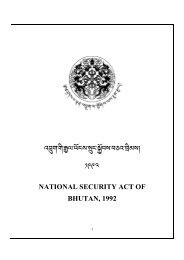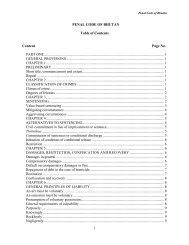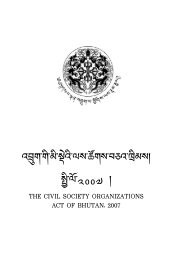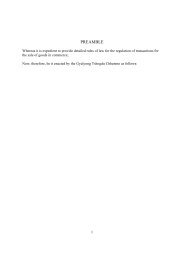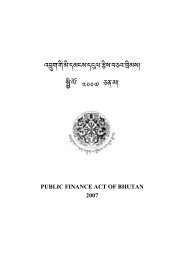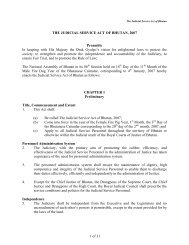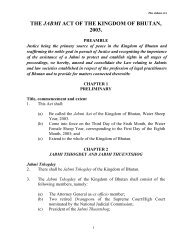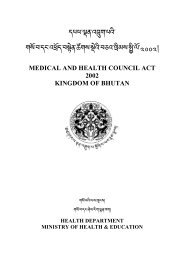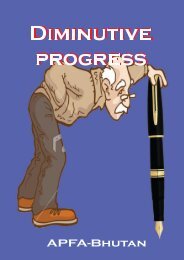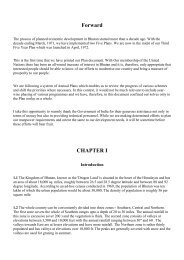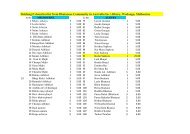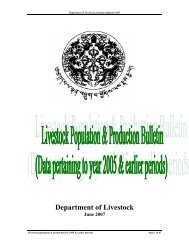journal of renewable natural resources bhutan - Ministry of Agriculture
journal of renewable natural resources bhutan - Ministry of Agriculture
journal of renewable natural resources bhutan - Ministry of Agriculture
- No tags were found...
Create successful ePaper yourself
Turn your PDF publications into a flip-book with our unique Google optimized e-Paper software.
Karma Nidup & Pema Wangchukvery long time. It has always been family and village chicken farmingrather than at commercial scale. Besides the state owned central andregional poultry farms, there are only couples <strong>of</strong> commercial poultryfarms in Bhutan. The demand for eggs and chicken meat in Bhutan isenormous and it is on rise. The existing farms including the state ownedcentral farms cannot meet these demand. Because <strong>of</strong> these, Bhutanimports huge amount <strong>of</strong> meat and eggs from neighboring states <strong>of</strong> India.The <strong>Ministry</strong> <strong>of</strong> <strong>Agriculture</strong> (MoA) has been encouraging to establishcommercial poultry farms particularly broiler farmers in the potentialareas <strong>of</strong> Southern Bhutan where influence <strong>of</strong> religion does not restrictrearing <strong>of</strong> broiler chickens. The establishments <strong>of</strong> number <strong>of</strong> “smallscale”broiler farms (200-500 birds) in Tsirang district and by farmersin Samtse district during 2004 to mid 2006 are some encouragingactivities initiated by the Department <strong>of</strong> Livestock, MoA, to promotebroiler meat production in Bhutan. However, one <strong>of</strong> the bottlenecks inthis important initiative has been lack <strong>of</strong> good broiler feed sources. Theonly national feed mill in the country is located at Phuntsholing and thebroiler feed from this company has not been popular. Successfulprivate farms such as Wangchutaba broiler farm in Thimphu districtand Gurung broiler farm in Gelephu district have been importing feedsfrom India. It is not clear why the feed produced within the country isconsidered inferior or to what extent imported feed is superior. Like inmany countries (Acamovic, 2002), it has also not been possible to getthe details <strong>of</strong> the basis <strong>of</strong> nutrient standards feed companies have beenusing because <strong>of</strong> commercial confidentiality. For all these reasons, themain purpose <strong>of</strong> this experiment was:Assess nutrient content <strong>of</strong> broiler feeds produced in Bhutan (KFG)and imported from India (SFG)Determine growth rate <strong>of</strong> broiler birdsAssess the efficiency <strong>of</strong> two categories <strong>of</strong> broiler feeds12



